December 2, 2007
I’ve just been trying out online mind-mapping at mind42.com, with a map of some notes on ‘Smart World: Breakthrough Creativity And the New Science of Ideas ‘ by Richard Ogle (The map below might take awhile to load.) It was pretty easy to start mind-mapping and adding links; it looked like images could only come from flickr or Yahoo Image Search, though. I guess I would have to upload images to flickr to get them on the mind map.
‘ by Richard Ogle (The map below might take awhile to load.) It was pretty easy to start mind-mapping and adding links; it looked like images could only come from flickr or Yahoo Image Search, though. I guess I would have to upload images to flickr to get them on the mind map.
You can drag the map around with your mouse to see all the parts; there are some links to click on. Controls along the bottom will increase/decrease the size of the map, expand/collapse the nodes, etc.
I expect to be adding to the map as I go further along with the book.
Comments (0)
- culture,mind
November 25, 2007
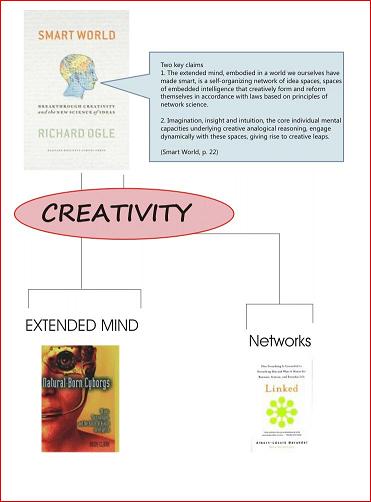 I’ve just recently started reading ‘Smart World’ by Richard Ogle and here is my first attempt at a clickable mind-map/ collage for some sources and concepts related to the book. (Clicking the image here will take you to a larger hyperlinked version.)
I’ve just recently started reading ‘Smart World’ by Richard Ogle and here is my first attempt at a clickable mind-map/ collage for some sources and concepts related to the book. (Clicking the image here will take you to a larger hyperlinked version.)
Comments (1)
- culture,mind
November 22, 2007
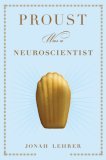 I have two personal “action items” as a result of reading Proust Was a Neuroscientist
I have two personal “action items” as a result of reading Proust Was a Neuroscientist . The first is to read Virginia Woolf for her insights into self and consciousness.
. The first is to read Virginia Woolf for her insights into self and consciousness.
Here is an excerpt from the chapter on Virginia Woolf (p. 182):
But how do we endure? How does the self transcend the separateness of its attentive moments? How does a process become us? For Woolf, the answer was simple: the self is an illusion. This was her final view of the self. Although she began by trying to dismantle the stodgy nineteenth-century notion of consciousness, in which the self was treated like a “piece of furniture,” she ended up realizing that the self actually existed, if only as a slight of mind. Just as a novelist creates a narrative, a person creates a sense of being. The self is simply our work of art, a fiction created by the brain in order to make sense of its own disunity. In a world made of fragments, the self is our sole “theme, recurring, half remembered, half foreseen.” If it didn’t exist, then nothing would exist. We would be a brain full of characters, hopelessly searching for an author.

My second action item – based on the chapter on Stravinsky – is to listen to “difficult” or unfamiliar music. I’m not sure if this applies to other art forms besides music, but I was fascinated by the account of Stravinsky’s ‘Rite of Spring’ as “simulated madness” that the mind later learned to listen to – explained neuroscientifically by the release of dopamine in response to surprising sounds. (“New Sounds” from WNYC is a good source for contemporary new music. For “simulated madness” – maybe watching a David Lynch film like ‘Inland Empire’ provides a similar experience?)
Lehrer writes (p. 142-143): “If the art feels difficult, it is only because our neurons are stretching to understand it. The pain flows from the growth… If not for the difficulty of the avant-garde, we would worship nothing but that which we already know.”
‘Proust Was a Neuroscientist’ at Google Books
Author Jonah Lehrer blogs at the Frontal Cortex.
Comments (0)
- culture,mind,self
October 30, 2007
On Deep History and the Brain by Daniel Lord Smail (U of California Press, 2007)
by Daniel Lord Smail (U of California Press, 2007)
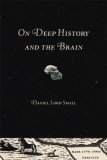 From the book description: “Daniel Lord Smail argues that, in the wake of the decade of the brain and the bestselling historical work of scientists like Jared Diamond, the time has come for fundamentally new ways of thinking about our past. He shows how recent work in evolution and paleohistory makes it possible to join the deep past with the recent past and abandon, once and for all, the idea of prehistory. Making an enormous literature accessible to the general reader, he lays out a bold new case for bringing neuroscience and neurobiology into the realm of history.”
From the book description: “Daniel Lord Smail argues that, in the wake of the decade of the brain and the bestselling historical work of scientists like Jared Diamond, the time has come for fundamentally new ways of thinking about our past. He shows how recent work in evolution and paleohistory makes it possible to join the deep past with the recent past and abandon, once and for all, the idea of prehistory. Making an enormous literature accessible to the general reader, he lays out a bold new case for bringing neuroscience and neurobiology into the realm of history.”
UC Press book information
Comments (1)
- culture,new books
September 30, 2007
[For this reading challenge I picked non-fiction titles that are outside the usual scope of my reading and of this website.]
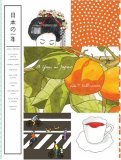
A Year in Japan by Kate Williamson is the last book for the “Non-Fiction Five Challenge.”
by Kate Williamson is the last book for the “Non-Fiction Five Challenge.” 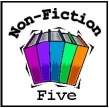 This is a beautifully drawn travel journal by an artist who spent a year living in Kyoto. I did not feel like I got much of a deeper acquaintance with Japanese culture, but the book was filled with the kind of observations that strike a foreigner traveling in a new land. The reader who has never traveled to Japan can get a sense of experiencing an unfamiliar culture through the author’s drawings and brief written descriptions. Not much about Japanese popular culture here, but there are notes about the food, festivals, street scenes and sights of Kyoto.
This is a beautifully drawn travel journal by an artist who spent a year living in Kyoto. I did not feel like I got much of a deeper acquaintance with Japanese culture, but the book was filled with the kind of observations that strike a foreigner traveling in a new land. The reader who has never traveled to Japan can get a sense of experiencing an unfamiliar culture through the author’s drawings and brief written descriptions. Not much about Japanese popular culture here, but there are notes about the food, festivals, street scenes and sights of Kyoto.
Amazon has “Search Inside the Book” for this title, and the Google Book page also has some preview pages, plus reviews and web page references.
Comments (0)
- culture,Non-Fiction Five Challenge
‘ by Richard Ogle (The map below might take awhile to load.) It was pretty easy to start mind-mapping and adding links; it looked like images could only come from flickr or Yahoo Image Search, though. I guess I would have to upload images to flickr to get them on the mind map.





 This is a beautifully drawn travel journal by an artist who spent a year living in Kyoto. I did not feel like I got much of a deeper acquaintance with Japanese culture, but the book was filled with the kind of observations that strike a foreigner traveling in a new land. The reader who has never traveled to Japan can get a sense of experiencing an unfamiliar culture through the author’s drawings and brief written descriptions. Not much about Japanese popular culture here, but there are notes about the food, festivals, street scenes and sights of Kyoto.
This is a beautifully drawn travel journal by an artist who spent a year living in Kyoto. I did not feel like I got much of a deeper acquaintance with Japanese culture, but the book was filled with the kind of observations that strike a foreigner traveling in a new land. The reader who has never traveled to Japan can get a sense of experiencing an unfamiliar culture through the author’s drawings and brief written descriptions. Not much about Japanese popular culture here, but there are notes about the food, festivals, street scenes and sights of Kyoto.

